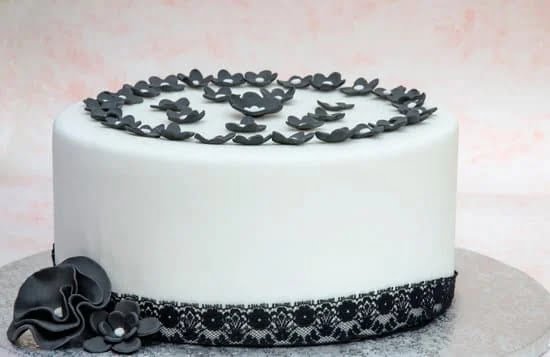Welcome to the world of edible printers for cake decorating. In this article, we will delve into the fascinating realm of using edible printers to create stunning designs on cakes. Whether you’re a professional baker looking to add new techniques to your repertoire or an enthusiastic home baker eager to elevate your cake decorating game, edible printers offer endless possibilities.
Edible printers are revolutionizing the way cakes are decorated. Gone are the days of painstakingly hand-painting intricate designs or struggling with piping bags for lettering and detailed images. With an edible printer, you can simply print high-quality designs onto edible paper using food-safe ink, and transfer them effortlessly onto your cakes.
In this comprehensive guide, we will take you through everything you need to know about edible printers for cake decorating. We will start by exploring what exactly these printers are and how they work. From there, we’ll discuss the benefits and advantages of using edible printers in cake decoration, as well as the different types available in the market.
So get ready to unlock a whole new level of creativity in your cake decorating journey as we introduce you to the world of edible printers. Whether you’re interested in creating professional-looking cakes or simply adding a personal touch to your homemade treats, these innovative devices are sure to impress. Stay tuned as we dive deep into understanding, choosing, and making the most out of this exciting tool.
Understanding Edible Printers
Edible printers have become a game-changer in the world of cake decorating, allowing bakers and cake decorators to bring their designs to life with stunning and personalized edible images. Understanding how these printers work is essential for anyone looking to explore this exciting technology.
Edible printers are specially designed devices that use food-grade ink and edible paper to print images directly onto cakes, cookies, and other edible surfaces. They work in a similar way to regular inkjet printers but with some key differences.
The main components of an edible printer include the printer itself, cartridges filled with FDA-approved edible ink, and edible paper or frosting sheets. These printers are typically modified versions of standard inkjet printers, with special modifications made to ensure they meet food safety standards.
When printing an image onto an edible surface, the design is first uploaded onto a computer or laptop. The printer then takes the digital image file and prints it onto the edible paper using the food-grade ink cartridges. The printed image is then transferred directly onto the cake or cookie using various methods like airbrushing or carefully placing it on top of frosting.
One important thing to note is that not all types of printers can be converted into edible printers. It is crucial to choose a printer specifically designed for this purpose as there are certain modifications necessary for food safety compliance.
Understanding how these printers work is just the first step in utilizing them effectively for cake decoration. In the next section, we will explore why using edible printers for cake decorating brings numerous benefits and advantages.
Why Use Edible Printers for Cake Decorating
Edible printers have revolutionized the world of cake decorating, offering a wide array of benefits and advantages for both professional bakers and home enthusiasts. These printers are specifically designed to print high-quality images, patterns, and designs directly onto edible paper or icing sheets, allowing decorators to create stunning and personalized cakes with ease.
One of the main advantages of using edible printers for cake decorating is the level of customization they offer. With these printers, decorators can effortlessly transfer any image or design onto their cakes, whether it’s a photograph, a logo, or intricate patterns. This opens up endless possibilities for creativity and allows decorators to cater to any theme or occasion.
In addition to customization, edible printers also save decorators time and effort. Traditionally, creating intricate designs on cakes required hours of meticulous hand-piping or painting. Edible printers eliminate this time-consuming task by quickly and accurately printing designs onto edible surfaces. This not only speeds up the decorating process but also ensures consistency in design quality.
Another notable advantage of using edible printers is that they allow decorators to reproduce complex designs that may be difficult to achieve by hand. Whether it’s intricate lace patterns or detailed watercolor effects, these printers have the precision necessary to bring even the most elaborate designs to life.
To fully take advantage of all the benefits that edible printers offer in cake decorating, it’s important to consider a few key factors before making a purchase decision. Firstly, decorators should ensure that the printer is compatible with food-safe ink cartridges approved for consumption. Additionally, factors such as printer size and connectivity options (such as wireless printing) should be taken into account based on individual needs and preferences.
By embracing the use of edible printers in cake decorating, decorators gain access to an incredible tool that enhances creativity while saving time and effort. Whether you’re a professional baker looking to expand your repertoire or simply a passionate home baker wanting to create wow-worthy cakes for special occasions, incorporating an edible printer into your decorating toolkit is sure to elevate your designs to new heights.
Exploring the Types of Edible Printers Available in the Market
The market for edible printers has expanded greatly in recent years, providing cake decorators with a wide range of options to choose from. These edible printers allow decorators to create custom designs and decorations using edible ink and paper. In this section, we will explore the different types of edible printers available in the market, highlighting their features and capabilities.
Inkjet Edible Printers
One of the most popular types of edible printers is the inkjet printer. These printers work similarly to regular inkjet printers but are specifically designed for printing on edible materials. Inkjet edible printers use cartridges filled with edible ink that is safe for consumption. They can produce high-quality prints with vibrant colors and crisp details on sheets of edible paper or frosting sheets.
Direct-to-Cake Edible Printers
Direct-to-cake edible printers offer a more advanced and convenient option for cake decorators. Instead of printing on separate sheets, these printers can directly apply edible ink onto cakes or other confectionery items. They often come with food-safe print heads, which allow decorators to create intricate designs directly on the surface of the cake. Direct-to-cake printers offer greater precision and creativity, making them ideal for those looking to personalize their cake designs even further.
Dye Sublimation Edible Printers
Dye sublimation printers are another type of printer commonly used in cake decorating. These printers work by transferring solid dyes from a ribbon onto special transfer paper, which is then applied to the cake’s surface using heat and pressure. Dye sublimation printing provides vibrant colors and excellent image quality, making it suitable for detailed designs and photographs.
It’s important to consider your specific needs and preferences when choosing an edible printer. Factors such as budget, desired level of customization, ease of use, and maintenance requirements should all be taken into account before making a purchase decision. By exploring the different types of edible printers available in the market, cake decorators can select a printer that best suits their individual requirements and helps them create stunning and unique cake designs.
Factors to Consider When Choosing an Edible Printer for Cake Decorating
When it comes to choosing an edible printer for cake decorating, there are several important factors to consider. Understanding these factors can help ensure that you select the right printer for your needs and create beautiful designs on your cakes.
Firstly, one of the most important factors to consider is the print quality of the edible printer. The quality of the prints will ultimately determine the final appearance of your cake designs. Look for a printer that offers high resolution printing capabilities, with crisp and clear images. It is also important to consider the color accuracy of the prints, as this can greatly impact the vibrancy and overall look of your cake decorations.
Another key factor to consider is the compatibility of the edible printer with different types of edible ink cartridges and paper materials. Some printers may only work with specific ink and paper brands, while others may have more versatility in terms of compatibility. It is essential to choose a printer that allows you to experiment with different types and brands of edible ink cartridges and sheets, giving you more options in terms of colors and textures for your cake designs.
The size and design of the printer are also important considerations when making this decision. Consider whether you need a portable printer or if a larger, stationary model will better suit your needs. Additionally, think about how easy it will be to operate and maintain the chosen model. Look for printers that have user-friendly interfaces and are designed for ease-of-use, particularly if you are new to working with edible printers.
Taking all these factors into account can help guide you in choosing an edible printer that meets your specific needs as a cake decorator. By selecting a high-quality printer that offers versatility in terms of ink compatibility, print quality, and ease-of-use, you can enhance your creativity and produce stunning designs on your cakes.
Top Tips and Techniques for Using Edible Printers Effectively in Cake Decoration
Using an edible printer for cake decoration requires some tips and techniques to ensure optimal results. Here are some top tips and techniques to help you use edible printers effectively in cake decoration:
- Prepare the Design: Before printing the design on the edible paper, it is important to prepare it properly. Make sure the image or design is of high quality and has a resolution of at least 300 dpi. You can use graphic design software or specialized cake decorating software to edit and adjust the design as needed.
- Choose the Right Edible Ink: When using an edible printer, it is crucial to select the right type of ink. Make sure to purchase FDA-approved edible ink cartridges that are compatible with your specific printer model. Using non-edible ink can be harmful if consumed.
- Handle with Care: Treat your edible printer like any other sensitive electronic device. Follow the manufacturer’s instructions for handling, cleaning, and maintaining the printer. Store your printer and edible ink cartridges properly in a cool, dry place away from direct sunlight.
- Practice Printing on Regular Paper: Before printing directly onto the edible paper, it is a good idea to practice on regular paper first. This helps you ensure that your design fits perfectly on the cake and gives you an opportunity to make any necessary adjustments before using the actual edible paper.
- Print on Fresh Edible Paper: It is best to print your designs on fresh sheets of edible paper just before decorating your cake. This helps prevent smudging or fading of the printed images due to moisture in the air or other factors.
- Apply Prints with Care: When applying printed designs onto cakes or fondant-covered surfaces, handle them gently to prevent tearing or distortion. Use a light touch when applying pressure to avoid damaging both the printed image and the cake itself.
- Consider Using Templates: To achieve precise placement of printed designs on your cakes, consider using templates or stencils specifically designed for edible printing. These can help you create intricate and professional-looking designs with ease.
By following these top tips and techniques, you can effectively use an edible printer for cake decoration and achieve stunning results. Remember to practice and experiment with different designs to unleash your creativity and explore the full potential of edible printers in cake decorating.
Exploring the Potential of Edible Printers
One of the most exciting aspects of using edible printers for cake decorating is the endless potential for creative designs and ideas. With these printers, decorators can truly let their imagination run wild and bring their visions to life on a cake canvas. Whether it’s recreating intricate patterns, personalizing cakes with photos or logos, or designing elaborate themed creations, edible printers offer a whole new level of artistic possibilities.
One popular trend in cake decorating is the use of edible images. Thanks to edible printers, decorators can now easily transfer photographs or illustrations onto cakes using edible ink and special frosting sheets. This opens up a world of possibilities for creating personalized cakes for special occasions such as birthdays, weddings, and anniversaries. From printing cherished family photos to company logos on corporate event cakes, edible images add a unique touch that can delight both the eyes and taste buds.
Beyond images, edible printers also allow decorators to print intricate patterns and designs directly onto cakes. Instead of painstakingly hand-piping every detail, decorators can now simply design their desired pattern on a computer and print it onto an edible sheet. This saves time and effort while ensuring precise and consistent results. From delicate lace patterns to vibrant geometric designs, there is no limit to the creativity that can be achieved with the help of an edible printer.
In addition to conventional cake designs, edible printers have also sparked innovative techniques such as 3D printing for cake decoration. By using specialized 3D printing technology combined with edible materials like chocolate or icing sugar, decorators can create stunning sculptures and intricate shapes that were previously difficult or impossible to achieve by hand.
This opens up a whole new realm of artistic expression in cake decorating and allows decorators to push the boundaries of what is possible in terms of design.
As more decorators discover the potential of edible printers, it’s clear that the only limit is their own imagination. With these versatile tools at their disposal, they can unleash their creativity and bring even the most extraordinary cake designs to life. The combination of technology and artistry is truly a game-changer in the world of cake decorating.
| Advantages of Edible Printers for Creative Designs | Ideas for Creative Designs |
|---|---|
| Easy transfer of edible images and photographs onto cakes | Personalizing cakes with family photos for birthdays or anniversaries |
| Precise and consistent printing of intricate patterns and designs | Creating vibrant geometric designs or delicate lace patterns |
| 3D printing capabilities for sculptural and intricate shapes | Pushing the boundaries of design with innovative techniques like 3D printing |
Troubleshooting Common Issues with Edible Printers
Printer Jamming and Paper Feeding Issues
One of the most common issues that cake decorators encounter when using edible printers is printer jamming or paper feeding problems. These issues can be frustrating and can disrupt the smooth workflow of your cake decorating project. To overcome these challenges, it is important to follow some troubleshooting steps.
First, check if the paper you are using is compatible with your edible printer. Some printers have specific recommendations for the type and thickness of edible paper that should be used. Make sure that you are using the appropriate paper and that it is not too thick or too thin for your printer.
If you are experiencing jamming issues, gently remove any stuck paper from the printer by pulling it out in the direction of the paper path. Be careful not to use excessive force as this may damage the printer’s mechanism. It is also helpful to clean the rollers of your printer regularly to prevent any accumulation of dust or debris that could cause issues with paper feeding.
Color Misalignment or Poor Print Quality
Another common issue with edible printers is color misalignment or poor print quality. This can result in blurred images, faded colors, or inconsistent alignment between different layers of an image. To overcome these challenges, there are several troubleshooting steps you can take.
First, ensure that your printer cartridges contain sufficient ink levels and that they are properly aligned. Consult your printer’s manual for instructions on how to align cartridges correctly.
It is also helpful to perform regular maintenance tasks on your printer, such as cleaning print heads and nozzles. This will help improve the overall print quality and eliminate any clogged nozzles that could be causing color misalignment.
If you are still experiencing color alignment issues, try adjusting the print settings on your computer before sending a print job to the edible printer. Experiment with different settings such as print quality and color calibration until you achieve the desired results.
Smudging or Smearing of Printed Designs
Smudging or smearing of printed designs is another challenge that cake decorators may face when using edible printers. This can happen when the frosting or icing on the cake comes into contact with the printed image, causing it to smear or blur. To prevent this issue, there are some precautions you can take.
First, ensure that your printed designs are completely dry before handling them. Allow enough time for the edible ink to set and dry thoroughly before placing the printed design on a cake.
You can also use edible glaze or a protective spray specifically designed for edible prints to seal and protect the design from smudging. Apply a thin layer of glaze or spray over the design once it has dried completely to help preserve its integrity.
In addition, be careful when handling and applying the printed design onto the cake. Use clean, dry hands or tools to avoid smudging the image accidentally.
By following these troubleshooting tips, you can overcome common issues that may arise when using edible printers for cake decorating. With patience and practice, you will be able to achieve professional-looking designs on your cakes using these versatile tools.
Frequently Asked Questions about Edible Printers for Cake Decorating
As the use of edible printers for cake decorating becomes more popular, many people have questions about how these printers work and how to use them effectively. In this section, we will address some frequently asked questions to help you better understand and navigate the world of edible printers.
- Can any printer be used for edible printing?
- What type of images can be printed with an edible printer?
- How long does it take for printed images to dry on a cake?
- Are there any restrictions on what types of cakes can be decorated with an edible printer?
- How long can an edible print last on a cake?
No, not all printers are suitable for edible printing. It is important to use a printer specifically designed for food-grade ink and edible paper. Regular inkjet printers may contain harmful chemicals that can contaminate the food. Edible printers are constructed with materials that meet food safety regulations and are compatible with edible ink cartridges.
Edible printers can print any image that can be printed on regular paper using a regular printer. This includes photographs, graphics, logos, and even text. The only difference is that instead of using regular ink, they use edible ink made from FDA-approved ingredients.
The drying time of printed images on a cake largely depends on factors such as humidity levels, temperature, and the type of icing used. Typically, it takes around 15-30 minutes for the images to fully dry. To ensure proper drying, it is recommended to leave the cake undisturbed after placing the edible print until it is completely dry.
Edible printers can be used to decorate various types of cakes including buttercream cakes, fondant cakes, ganache cakes, and even cookies and cupcakes. However, it is important to note that certain textures or decorations may impact the quality or appearance of the print. For example, highly textured icing or rough surfaces may cause smudging or distortion in the prints.
The longevity of an edible print on a cake depends on a variety of factors such as the freshness of the cake, storage conditions, and the type of frosting used. In general, if stored properly in a cool, dry place away from direct sunlight, edible prints can last up to one week without significant fading or discoloration.
By addressing these frequently asked questions, we aim to provide clarity and guidance for those interested in using edible printers for cake decorating. With this information, you can have a better understanding of how these printers work and confidently explore their potential for creating stunning and personalized cake designs.
Conclusion
In conclusion, edible printers for cake decorating offer a world of possibilities and versatility when it comes to creating stunning cake designs. Whether you are a professional baker or someone who enjoys baking as a hobby, these printers can revolutionize the way you decorate cakes. The ability to print intricate designs, personalized messages, and even photographs directly onto edible sheets opens up endless creative opportunities.
One of the key benefits of using edible printers is their ease of use. With advancements in technology, these printers have become more user-friendly and accessible to everyone. Even if you don’t consider yourself artistic or skilled in cake decoration, an edible printer can help you achieve professional-looking designs with minimal effort.
Additionally, edible printers allow for greater customization. You can create unique designs tailored to specific events or themes by simply uploading images or designing your own patterns. This level of personalization is sure to impress clients or guests and make your cakes stand out.
Moreover, exploring the potential of edible printers not only involves printing designs but also experimenting with different techniques and materials. From using colored icing sheets to creating three-dimensional effects with layered prints, there is no limit to what you can achieve with these innovative tools.
Frequently Asked Questions
Can a regular printer be used for edible printing?
Yes, a regular printer can be used for edible printing, but it requires some modifications. Edible ink and edible paper need to be used instead of traditional ink and paper. Edible ink is made from food-grade coloring and is safe to consume.
Edible paper is typically made from rice or sugar and dissolves easily when in contact with moisture. These specialized materials ensure that the printed designs are safe and suitable for consumption.
What printer can be used for edible printing?
A printer specifically designed for edible printing is recommended for best results. These printers are often called edible inkjet printers or food printers. They are similar to regular inkjet printers but have been adapted to handle edible ink cartridges and print on edible paper. These printers have food-safe components that meet the necessary regulations for producing edible items.
How do you print edible designs on a cake?
To print edible designs on a cake, you first need to choose or create your desired design on a computer using appropriate design software or an online platform. Once you have your design ready, load the printer with the appropriate size of edible paper and fill the cartridges with edible ink according to the printer manufacturer’s instructions.

Welcome to our cake decorating blog! My name is Destiny Flores, and I am the proud owner of a cake decorating business named Cake Karma. Our mission is to provide delicious, beautiful cakes for all occasions. We specialize in creating custom cakes that are tailored specifically to each customer’s individual needs and tastes.





